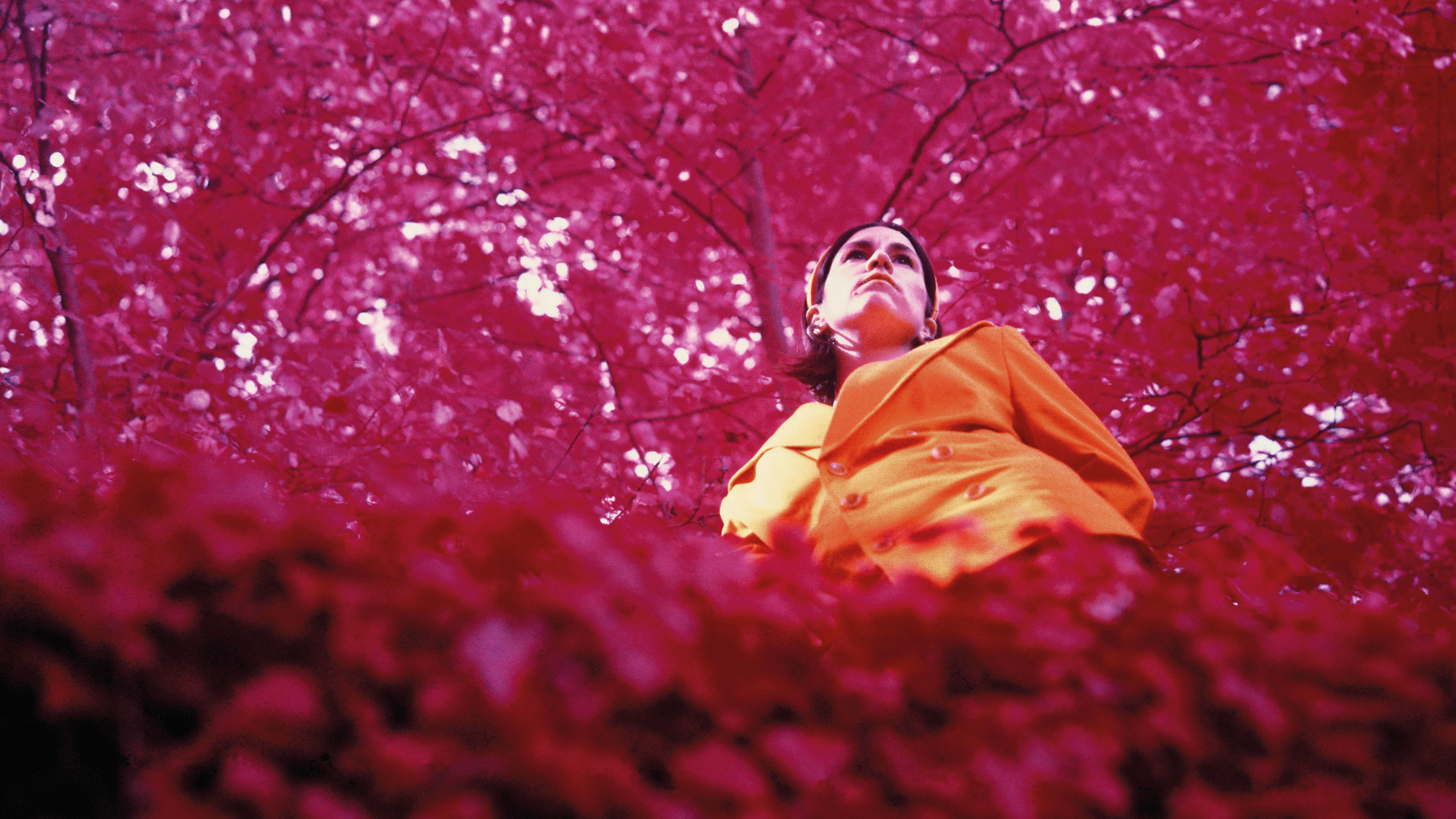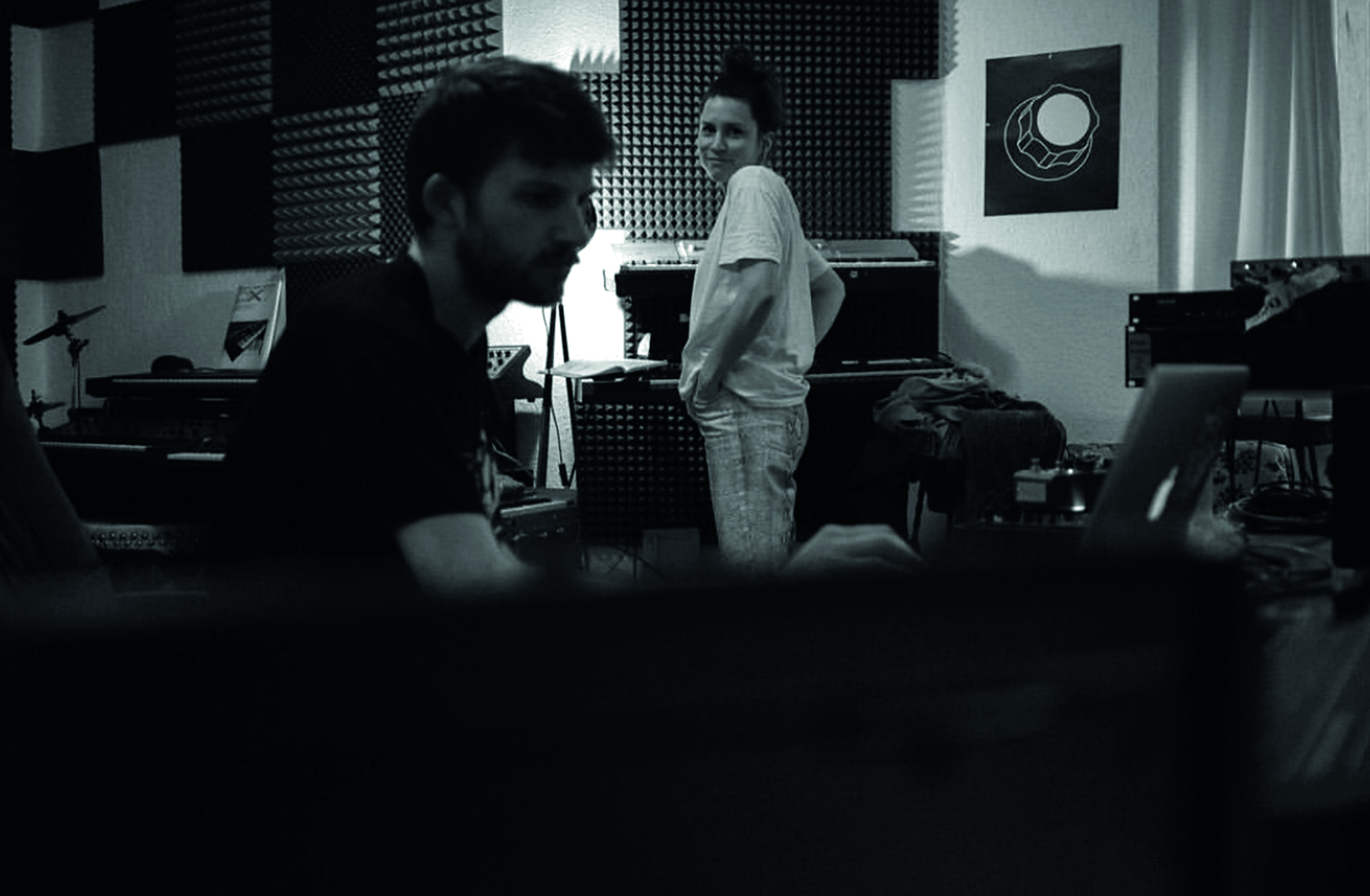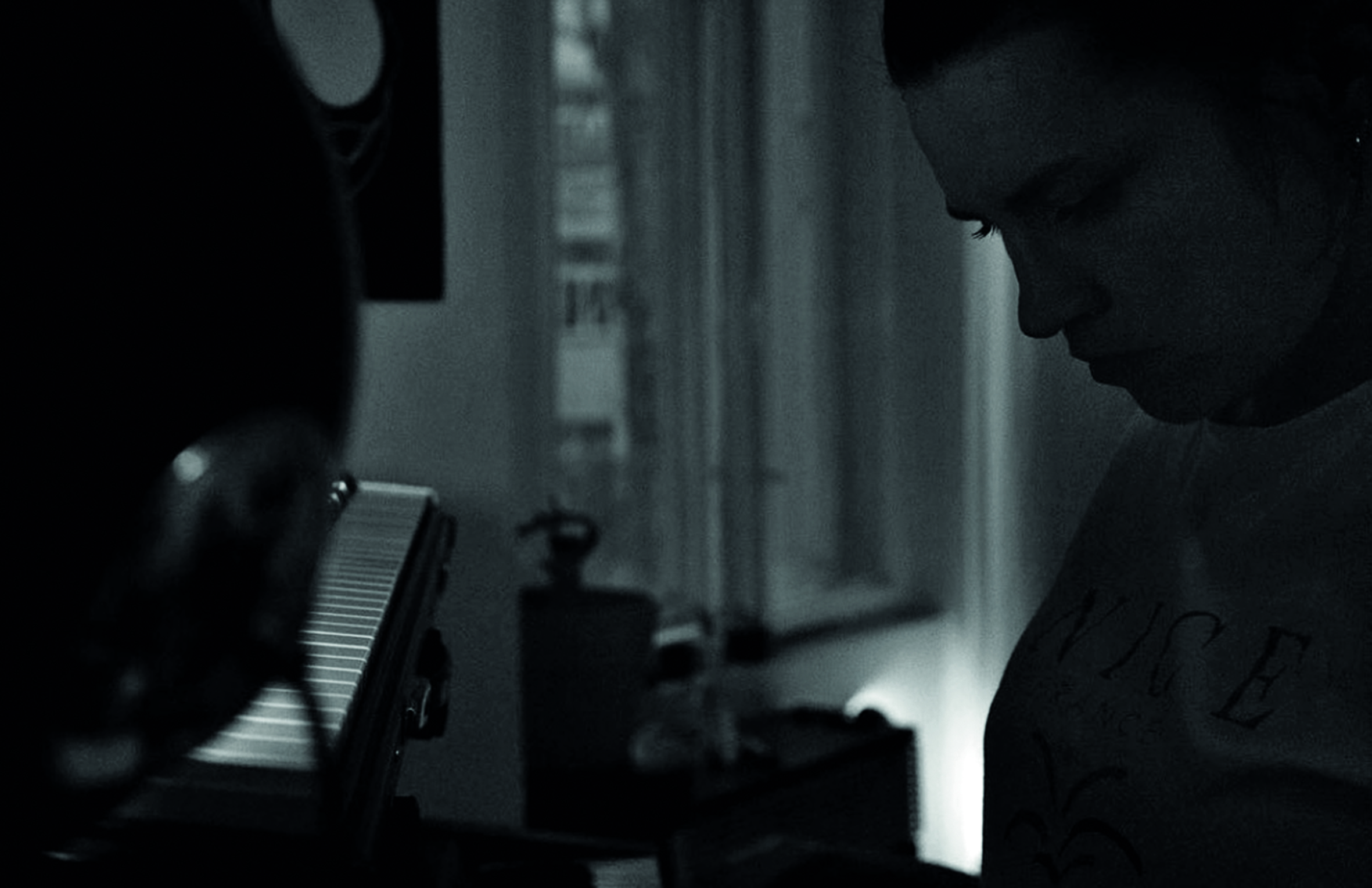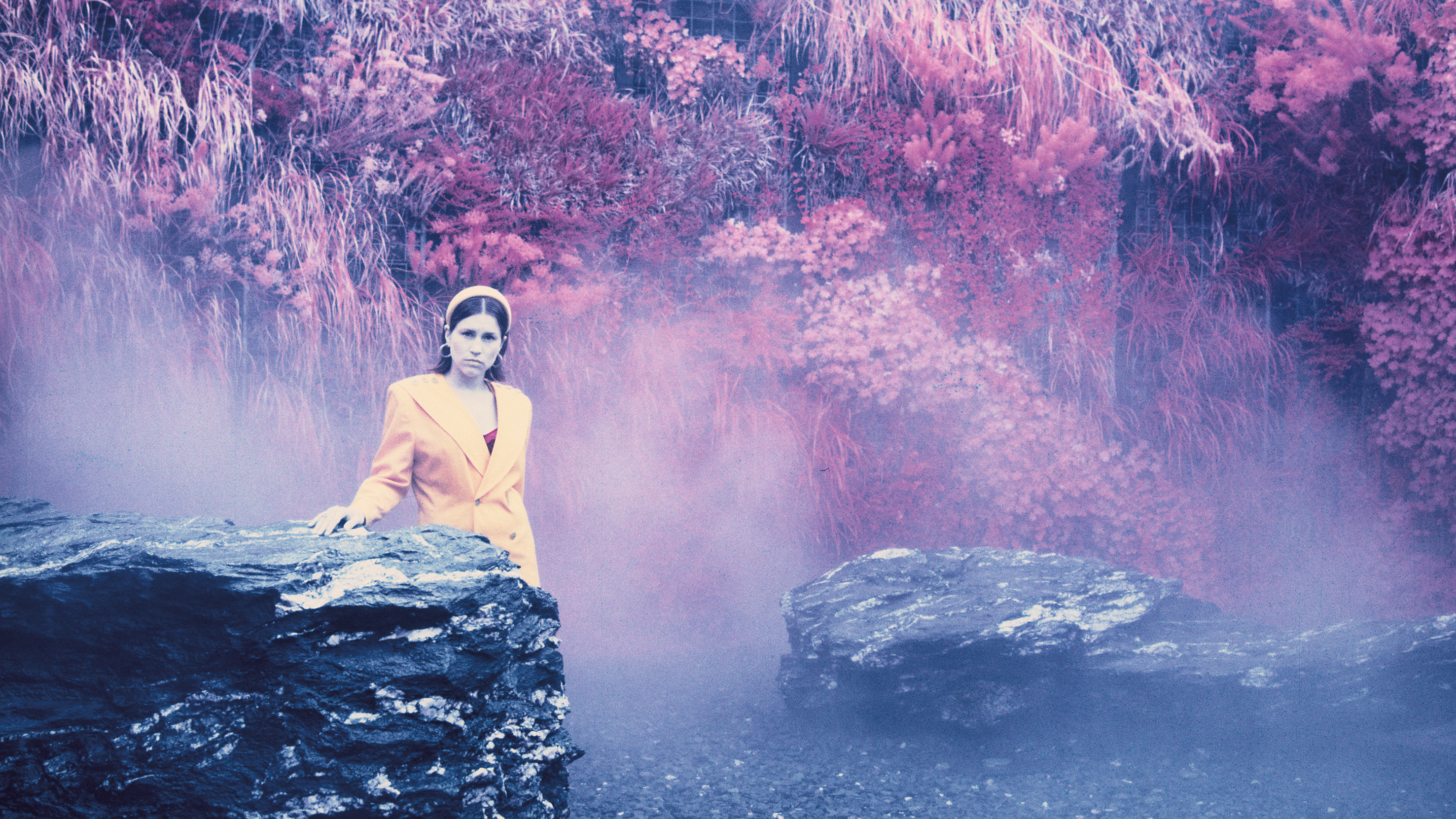EERA on how Soviet Russian synths and Queens of The Stone Age inspired the sound of her new album, Speak
Hot on the heels of a European tour with Public Service Broadcasting, EERA opens up about the creative process behind her latest LP

Regardless of your personal view on things like fate and destiny, sometimes small gestures of kindness can allow incredible journeys to occur.
For EERA (Anna Lena Bruland) this moment happened around the age of 15 when a friend gave her a burned CD of Rated R by Queens Of The Stone Age. “I’d constantly listen to it on my Discman trying to not let it skip when I was walking. I absolutely loved it. Before this I was listening to more Norwegian singer/songwriter folk artists like Ane Brun and Thomas Dybdahl.
“When I got introduced to music from the States and the UK it completely changed my idea of what music could be. From there I moved onto Nirvana, diving deep into all the rock stuff and after Nirvana came Radiohead and PJ Harvey. I just took it all in. It was great.”
It was at this point Bruland picked up her first guitar, developed an interest in songwriting and at 18 decided that in order to develop her craft it was time to relocate from her native Norway. “I always wanted to move to England because my favourite bands are English. I wasn’t very inspired by the music scene in Norway. There’s lots of great schools for classical music and jazz but there’s not really much for pop so I had to look elsewhere. LIPA (Liverpool Institute of Performing Arts) looked like fun so I thought ‘why not?’.”
That proved to be the catalyst to a music career and in 2017 EERA released her debut album Reflection Of Youth on Ninja Tune and Big Dada, moved to Berlin soon after, and in 2019 collaborated with Public Service Broadcasting on their latest album Bright Magic. At the end of last year EERA released her second album Speak and has been supporting PSB on their successful around the UK and Europe.

Gazing at shoes
Whereas Reflection Of Youth had a very stripped-back rawness to its sound, EERA’s latest album Speak is a fuller, richer record with interwoven synthesisers used to add atmosphere and edginess. “I wanted to have a very unapologetic sound and I wanted to bring out the feel of the 90s,” she explains. “Not that I couldn’t with the first record, but I felt more confident with this one.
“If you listen to a Pixies record or a My Bloody Valentine record it almost sounds a bit flat at first. Then you realise they have a backbone over a bass. It’s kind of a weird mind-fuck of a sound and I like the idea of having to listen over and over again to hear what’s actually happening.
Want all the hottest music and gear news, reviews, deals, features and more, direct to your inbox? Sign up here.
“I’ve definitely listened to a lot more shoegaze before this record,” EERA continues. “I always loved the decade of the 90s in terms of rock music and I guess going into it I wanted to capture some of that sound.”
Working alongside long-term collaborator and producer Allister Kellaway, EERA found the reassurance of working with such a close friend enabled an honest level of synth sound exploration. “It’s crazy having him on board,” she says. “He’s a huge part of my sound image. He’s so technically gifted and way more patient than I am. I’m more of a ‘let’s just get there’ person and he’s like, ‘no, hold on, I need to finish the EQing’!”
“My friend has a wonderful studio in Berlin where she has tonnes of different synths, like the Juno-60, Yamaha CS-15 and Korg Delta, but also has these amazing things from Russia like the Polivoks that you look at and go ‘what the hell is this?’ It was so cool to go there with Allister and experiment with sounds.”
“I feel comfortable with him. I can be completely honest in my opinion. I talk a lot in terms of texture. Maybe I might want a synth sound to feel like birds, or have a harsh undertone, but softness on top. He just gets it.”

Using the beat
With a new direction in sound came a new way of writing: “I’ve recently really gotten into writing music from drums,” says EERA. “My partner is a drummer and I sometimes ask him to send me files of rehearsals when he’s been drumming or practising. I take them into Logic and I write from that rhythm. I also ask Allister to send me drum loops that he hasn’t used. I won’t necessarily use any of these for recording, but it’s just a way to get moving.”
“On the previous record I always wrote from guitar with a click track, whereas now it’s more fun to play to drums. I can build it in a different way, start with synth or guitar over the drums and then build from that.”
Alongside drum beats, plugins play a key part in the demo process, as EERA reveals. “My production skills are constantly evolving and it’s really fun now because I can actually present demos that speak better in terms of what I’m thinking in my head. When I first started out years ago all I did was record guitar into Garageband with a laptop mic and it was hard for me to explain where I wanted to go with it.
“My process now is to record into Logic with my Korg Minilogue setup through the built-in Logic plugins, or my UAD sound card which has some amazing plugins on there. I have two different microphones set up: a dryish one with a little bit of reverb on it, and an overdrive mic. I have a guitar that goes directly into my interface to throw in some overdrive and tape delay, and my Arturia Drum Brute drum machine that I put through an amp plugin to make it sound more crunchy. Once I have all of those set up, I can just write from that perspective quite quickly because I like to work pretty fast.
Playing out live
“I definitely write for the album and worry about playing it live later,” EERA says when we turn to the subject of taking her sound out live. “I want to write, I don’t want to have that limitation in my head. When I write a record that’s always going to be challenging, especially if I want to play alone.
“My mate Doug who lives in Berlin has kindly agreed to give me lessons in Ableton. I want to create a solo set that represents me in a better way. I feel now when I play solo, it’s fine, but I’m represented too much like a singer/songwriter girl and I don’t really see myself as that. That was me when I was 16. So he’s going to help me to kind of create a cooler way to present myself by using Ableton and not much backing track, but some triggers and some sounds and then I can put my mic through different sounds and I can create that kind of shoe-gazey rocky world with me on stage alone. If I can do that, I think I’ll sound a lot stronger and people will get what I’m about more which I’m excited about.”
Working in a space
“I basically like to create a space that I like the sound of with my effects plugins and then I write in that space,” EERA explains. “I don’t want to find myself going ‘oh, I want this’ and then having to unplug something, plug something else back in, and set something else up over there. I get bored so I need to work extremely fast and I think this way of writing is great.
“Afterwards, I can sit back and go ‘OK, I like that melody line, that guitar piece and cut sections out and just delete or mute them. I love a mute button,” Anna says, laughing. “I like taking a shot of a WAV file, or bounce it and listen to that section muted and then I put it back in and move bits around like a puzzle. As a result I have tonnes of two-minute ideas stored on my laptop that will never see the light of day. I couldn’t tell you what they are, but maybe if I get really, really famous and when I’m gone, someone will dig out my archives and release it as some crazy double LP?”
Plan for success
While discovering new songwriting techniques and experimenting with synths and plugins, EERA was also busy creating her own record label. “I can’t take much of the credit,” she pauses. “I told my management I wanted to do it and they helped me. Speaking to a lot of artists and friends I think it’s the way forward, especially if you have great management, good PR and hopefully publishing.”
“I was lucky because my first record with Ninja Tune and Big Dada got me out into places that I wouldn’t be able to on my own. Having that platform meant I can build on my own. Just owning everything myself feels fantastic and not having to give a label money is great.”
It’s easy to think this is something that’s only achievable with a well-received record and established audience behind you. But, as EERA explains, with planning and patience anyone can do it. “Don’t rush it,” she states quickly. “If you’re sitting on, let’s say ten songs, you’ve got them recorded, in the mix and you think they sounds good. The main thing is don’t go, ‘I just want to get out there’ and plonk them on SoundCloud, because that won’t get you anywhere. You’ll get disappointed, because even though you say to yourself ‘I don’t care if I don’t get any plays, I just want it out there’, That’s a lie.
“If you’re lucky enough to find management, that’s great, but more important is PR. Get some money for PR because you want someone to help you to strategise a release plan. Without a plan, and without those steps and the PR’s contacts it’s impossible to get noticed. And it’s better for it to go through a PR person that people trust, they know does good stuff for them and they’ll be more likely to open the email. That’s number one.”
“Number two. There are loads of people out there who can help you set up a label. My management help me and I’m lucky to be in Germany because there’s a lot of arts funds to be had. I know it’s different in UK and that’s really unfair. I think the government is being horrible about that, but it costs money and if you’re smart about it there are ways to somehow rustle up some cash. Again possibly over time so be patient.”
“Finally make sure you have fun with it. Once you finish some songs, think how you want to represent yourself, what type of photography do you want? How many music videos do I want to do? Make it into a fun project rather than thinking, ‘shit I need to make the music videos now, balls I need to start doing some photos’.”
“For me anyway I love planning all of it, but don’t rush it. You may need to sit on the music for a year, maybe two years rather than simply posting on SoundCloud.”

“I think the whole concept of success is a bit vague because I don’t really believe in success,” EERA says. “I feel like ‘successful’ can be anything from you writing your own songs in your room to you doing a support tour, sleeping on someone’s floor to you being on a tour bus supporting arenas. It depends on how you look at it.
“So for me, I don’t really feel my breakthrough point has happened yet. When I hit 30 I had to ask myself ‘why do I do this?’ It’s very selfish what I’m doing, I just do it to write my own songs.
“This tour [with Public Service Broadcasting] now has been fantastic, I’m now at a place where I get an insight into quite comfortable touring. It’s quite funny talking to the lads and they’re like ‘of course you get a hotel room!’ I’m still not used to that concept.
“I don’t know if I’ll ever get to a point where I’m like, ‘here it is, this is it – I’ve got it’. I’ve also come to terms with the fact my music is not Beyoncé. The music that I do will not be for a person in that world and I’ve accepted that. It’s good to have accepted that.
“Of course it would be nice to play in a venue where you have 1000 people looking at me and singing the lyrics back. I mean that would be amazing and maybe one day that will happen and I hope it does.”
Reflection of you
As our conversation draws to a close EERA leaves us with one more piece of advice that’s helped her as a musician. “A friend told me a while ago to separate myself from my music self. I have my music self which is EERA, but then I also have myself Anna Lena. So if the music self EERA doesn’t do quote-unquote ‘well’, I as Anna Lena won’t be affected by that.
“I think because music is personal and I’m really honest in my lyrics and stuff, I had a period of time where I was so intertwined with my music self that I kinda forgot about my other self. That’s really scary, because if you get a bad review, or two people turn up at a gig, or you don’t sell any records, you can easily then feel sad as your human self. As soon as I separated into two, I realised, ‘oh, I’m actually really cool as an individual self Anna Lena!’ I know not everyone will like this. Some people are solely focused and driven by ‘the music,’ but for me it’s been healthy to separate into two. The music itself was more fun because it didn’t have as much power over me anymore.”
EERA's top 4 plugins
1. Valhalla DSP Valhalla Delay
“We used this a lot, mostly for making synth chords big and wide. We put a lot of synths through a Roland Chorus Echo, which came out in mono, so used this to make that echo more complex in stereo. It’s got a great tape emulation and a lot of the time we would just send stuff through it so you could just hear the tape saturation and warbling effect. The synth arpeggios in the middle section of Falling Between The Ice are an example; the same part is on two channels, one with a big swirly delay and another dry with lots of tape saturation.”
2. TAL Software TAL-Chorus-LX
”A great free emulation of a Juno stereo chorus. We put it on a lot of bass synths. The last section of Midnight is a good example. It’s got a lot of low end, plus a Mix control so you can keep some dry signal in there too.”
3. Audio Assault Headcrusher
”A fun little distortion. We used it a lot on guitars to make them pop out a bit more. It’s got some good filter controls so you can pick out all of the right frequencies to distort.”
4. Soundtoys Devil-Loc Deluxe
”We would use this for really heavy distortions. It’s on the bass synth in the choruses for My Muse, the darkness control is a great touch because you can take out the harshness without losing any character.”
EERA's latest album, Speak, is out now.


Computer Music magazine is the world’s best selling publication dedicated solely to making great music with your Mac or PC computer. Each issue it brings its lucky readers the best in cutting-edge tutorials, need-to-know, expert software reviews and even all the tools you actually need to make great music today, courtesy of our legendary CM Plugin Suite.
